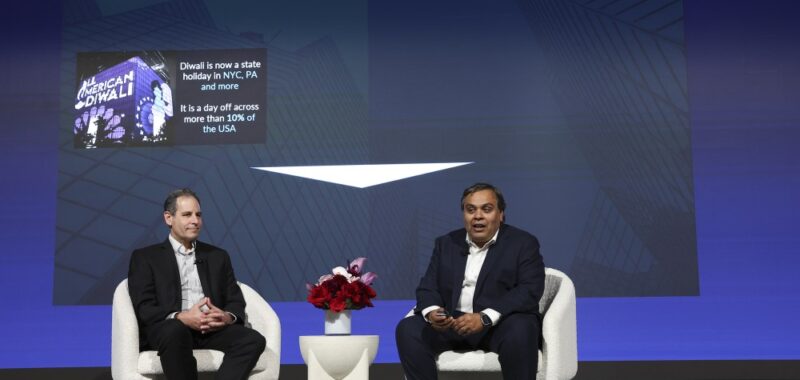There is a lot of change happening in America today, and retailers are right in the middle of it all.
During WWD’s annual Apparel & Retail CEO Summit Prashant Agrawal, chief executive officer of Impact Analytics, and Ben Pivar, senior IT adviser at Carters Inc., took the stage to discuss the trends shaping tomorrow and AI solidifying as a “must.”
The discussion kicked off with a look at the four trends that Impact Analytics predicts are shaping tomorrow: GLP-1, demographic shifts, product shifts and the need to adjust.
In the past year, Impact Analytics spend time conducting research and looking at its clients. The company has clients all across the U.S., but when looking specifically at New York City, there is a noticeable sizing shift. While Agrawal joked that he is not a doctor, he can identify some side effects of the drug when it comes to retail. New York City is the epicenter of usage for GLP-1 weight loss drugs and data shows that demand for smaller sizes is rising as demand for larger sizes declines.
Notably, even as reports are published about the health risks of taking these weight loss drugs, Impact Analytics research shows no signs of usage slowing down. In 2023 and 2024, the number of weight loss drug trials is greater than ever. Agrawal said Impact Analytics will continue to monitor the effects of machine learning to fully understand what people will need.
The second and third big trends Agrawal called out are demographic shifts, which have been more impactful over the last four years than in the last 50 years, and change in composition. With these things in mind, Agrawal said it is paramount to ask if customers feel heard and how to cater to their tastes. Product shifts are inevitable with these changes.
“AI is a must,” Agrawal said. For its part, Impact Analytics helps retailers with merchandising and supply chain solutions from planning to inventory. The company forecasts a million skew store constructs every week with partners including Dollar General, Levi’s and Patagonia, among others. Forecasting, he said, is a foundation of all of Impact Analytics’ products today.
From his perspective, Pivar said that when Gen AI was first introduced, it was clear that its potential was to be as big as the internet. “It’s going to be a big change for us,” he said. “I think there’s a huge opportunity to do greater things other than just productivity and I’m super excited about it.”
Productivity tools and prompt engineering like Chat GPT, he said, are “going to be the easy stuff.” What he is interested in “is how it might fundamentally change our industry.” Use in images, design and video will require change for the industry. “I’m sure that a lot of people are a little afraid of that, but the future’s coming, and we need to figure out how we integrate into our processes.”
Working with Impact Analytics for advanced analytics AI, Pivar’s team chose to begin with pricing before beginning use on inventory. For other retailers, he said, this might not be the best case for sequence and advised that retailers consider where their strengths are, asking where value is coming from.
Looking ahead and the undeniable growth and potential of generative AI, Agrawal pointed to what he has learned teaching at Columbia Business School where he teaches AI and advanced analytics in retail, sharing that the younger generation is taking these tools in very quickly.
“As you think about it, for your organizations, I think adoption of some of these tools is a good way to attract talent,” Agrawal said. “The younger talent is attractive to places that are taking on these tools.”

